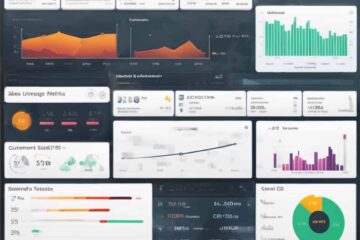Analysis is a critical component in optimizing sales territory management, as it provides valuable insights to drive strategic decision-making and maximize sales performance.
By harnessing the power of data analysis, sales teams can identify patterns, trends, and potential opportunities within their territories, leading to more targeted prospecting, efficient resource allocation, and ultimately, increased revenue.
In this blog post, we will research into the significance of data analysis in sales territory management and how it can revolutionize the way sales professionals approach their territories.
Understanding Sales Territory Management
Sales territory management is the process of dividing a market into different areas to manage sales efforts efficiently. This division is based on factors like location, customer types, or product demand.
The aim is to ensure each area has enough potential to justify the resources allocated to it.
Sales representatives are assigned specific territories where they focus their efforts, allowing companies to tailor strategies to meet local demands and manage the workload effectively.
To implement this, companies analyze data such as customer buying patterns and regional sales performance to create balanced territories that align with their strategic goals.
This helps in deciding how many sales reps to assign to each area and where they should concentrate their efforts.
With clear territories, sales teams can focus better, improve customer relationships, and increase sales in their designated areas.
Benefits of Effective Territory Management
- Enhanced Productivity: Territory management optimizes rep assignments, leading to increased productivity and more effective time management.
- Improved Customer Relationships: Focused attention on specific regions allows for deeper customer engagement and enhanced relationship building.
- Increased Revenue: Strategic territory allocation aligns with market potential, leading to improved sales outcomes and increased revenue.
- Reduced Overlaps and Conflicts: Clearly defined territories prevent overlaps and conflicts among sales reps, ensuring comprehensive market coverage.
- Better Market Insight: Data-driven analysis of market trends and customer behavior informs strategic decisions and fosters market penetration.
- Streamlined Resource Allocation: Efficient territory management ensures optimal use of resources, reducing waste and maximizing return on investment.
- Higher Customer Satisfaction and Loyalty: Targeted sales efforts tailored to specific customer needs improve satisfaction and boost loyalty.
The Role of Data Analysis in Sales Territories
Data analysis is integral to sales territory management, providing essential insights that drive strategic planning and operational decisions.
Through the use of predictive analytics and performance data, companies can tailor their approaches to maximize efficiency and profitability.
A. Predictive Analytics Specialist
This role focuses on using historical data to forecast future sales trends and performance within different territories.
Specialists develop predictive models that help determine potential sales volumes and identify emerging market opportunities. They work closely with sales and marketing teams to translate data-driven forecasts into actionable strategies that align with company goals.
B. Market Research Analyst
Market research analysts gather and analyze data on customer demographics, preferences, and buying patterns. Their insights help shape the structure of sales territories by identifying where demand is highest and which products are likely to succeed in each area.
They play a crucial role in ensuring that territories are designed to capture the maximum market share and customer interest.
C. Sales Operations Manager
This role involves overseeing the implementation of sales strategies across territories. Sales Operations Managers ensure that resources are allocated efficiently, sales targets are met, and territories are managed effectively.
They use data analysis to optimize sales processes and improve overall sales team productivity by addressing any logistical or operational challenges that arise.
D. Customer Insights Analyst
Specialists in this role focus on analyzing customer behavior and feedback to enhance relationship management within specific territories. By understanding customer needs and satisfaction levels, they help tailor sales approaches to improve engagement and loyalty.
Their analysis supports the sales team in delivering more personalized and effective customer service.
E. Resource Allocation Strategist
This role is crucial for determining how best to distribute resources—such as manpower, marketing budgets, and inventory—across different territories to maximize returns.
The strategist uses data analysis to identify high-performing areas and potential growth spots, ensuring that investments are made where they are most likely to yield high returns.
Their decisions directly influence the success of sales strategies and the overall efficiency of the sales force.
Implementing Data Analysis Strategies
Many sales teams lack the specialized skills needed to effectively leverage data in managing their sales territories. To bridge this gap, it’s essential to provide comprehensive training on data analysis tools and methodologies.
Such training should educate sales personnel on how to interpret data, recognize patterns, and apply analytics to refine sales strategies and stimulate growth. This will enable the sales force to make well-informed decisions using robust data insights, enhancing their ability to meet and exceed sales targets.
Above all, note that sales territory management is not a static process; it demands continuous evolution to keep pace with shifts in market conditions, customer preferences, and competitive actions. So it’s critical to consistently monitor and evaluate key performance indicators (KPIs) and regularly review sales data.
Analyzing this information helps identify performance gaps and areas needing enhancement.
By perpetually adjusting strategies based on these data-driven insights, sales teams can maintain flexibility and responsiveness to the market. This ongoing refinement process is key to improving sales effectiveness and achieving sustained success.
Leveraging Beest.app for Data-Driven Territory Management
In the realm of sales territory management, harnessing the power of data is indispensable. Beest.app emerges as a formidable tool in this space, offering advanced data management capabilities that are crucial for sales teams to efficiently analyze, organize, and utilize data for strategic decision-making.
Unlike more generalized platforms, Beest.app provides tailored features that enhance the understanding and management of sales activities, customer interactions, and performance metrics, thereby optimizing territory allocation and improving sales outcomes.
Additionally, Beest.app integrates Geographic Information Systems (GIS), which is essential for any effective territory management strategy that considers the geographic dimensions of sales territories.
This integration allows sales teams to visualize and analyze spatial data—such as customer locations, market demographics, and competitor distribution—on interactive maps.
Tools like Beest.app not only facilitate a deeper understanding of regional sales trends but also enable the optimization of territories for enhanced sales performance.
By leveraging Beest’s GIS capabilities, companies can craft more targeted sales strategies, driven by precise geographic insights, leading to better market penetration and increased revenue.

Final Thoughts | Harness the Power of Data with Beest.app
It’s clear that in the fast-paced and competitive world of sales, data analysis is essential.
Beest.app stands out as a vital tool for sales territory management, enabling organizations to harness data-driven insights for strategic resource allocation, identification of growth opportunities, and performance optimization.
With Beest, sales teams gain the power to make informed decisions, swiftly adapt to market changes, and drive substantial revenue growth. This platform ensures that your business can effectively manage its territories and maintain a competitive edge.
So don’t let your sales strategies fall behind; invest in Beest.app’s Sales Territory Management features today and transform data into your most powerful asset.
Frequently Asked Questions
How does data analysis improve sales territory management?
Data analysis identifies trends that guide the strategic allocation of sales territories, boosting performance.
What are the benefits of using data-driven insights in sales strategies?
Data-driven insights help target the right prospects and efficiently allocate resources, increasing revenue.
Can data analysis adapt to changing market conditions in sales territory management?
Yes, data analysis allows sales strategies to adapt quickly to changing market dynamics.
How can Beest.app enhance my company’s sales territory management?
Beest.app provides advanced tools that offer deep insights for optimizing sales territories and improving outcomes.












